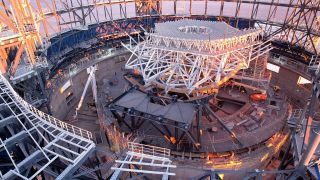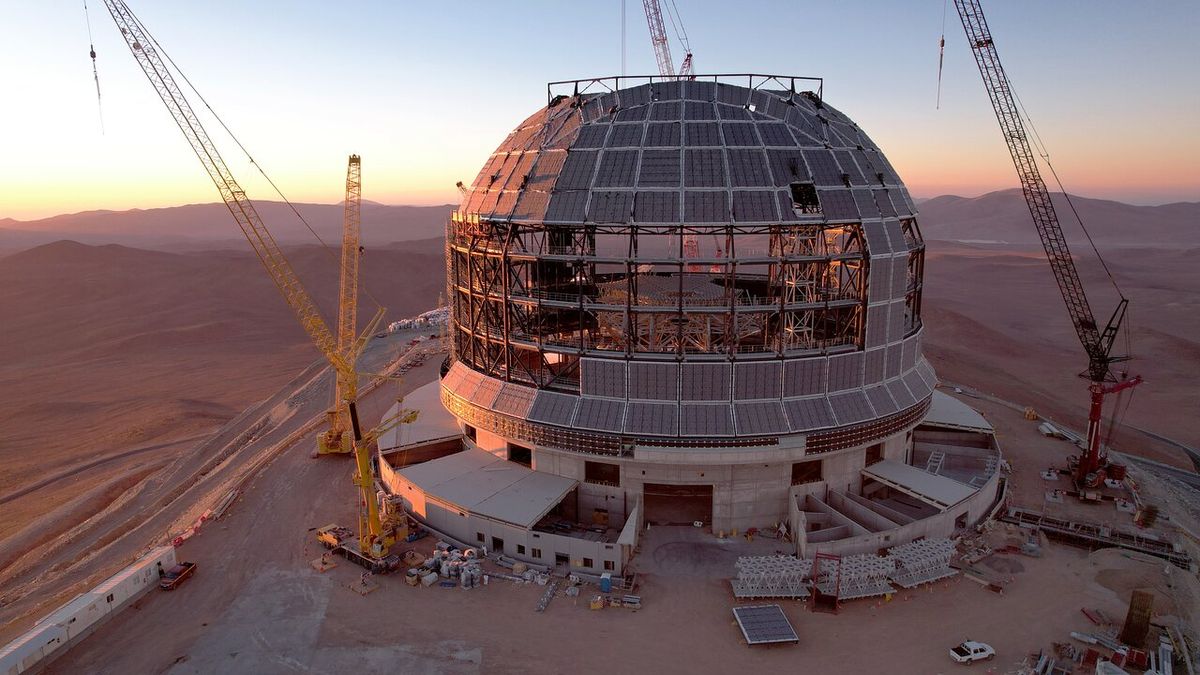The dome enclosing the world’s largest telescope is taking shape, with the installation of protective siding and supports for the primary mirror.
The European Southern Observatory’s (ESO) Extremely Large Telescope (ELT) is currently under construction on the Cerro Armazones mountain in Chile’s Atacama Desert and is expected to see its first light by 2028.
Recent progress photos from the construction site taken in June 2024 show cladding being installed on the outside of the ELT dome. This layer of material serves as a thermal insulation barrier and provides weather resistance to help protect the telescope from the extreme environment of the Chilean desert.
Part of the dome will have large sliding doors, which will remain closed during the day and open at night, allowing the telescope to survey the sky. Once complete, the telescope will hunt for Earth-like exoplanets in search of signs of life outside of our own solar system and probe the early universe to study the first galaxies that formed after the Big Bang, among other tasks.
Assembly has begun on the beam structure for the sliding doors, which will help protect the telescope from the high daytime temperatures and dusty desert environment.
Related: The Milky Way’s heart shines over construction site of world’s largest telescope
Construction photos from June also show progress on the support structure in the center of the dome that will eventually hold the ELT’s 128-foot-wide (39 meters) primary mirror (M1), which weighs a whopping 200 tons. The mirror will rest on the white lattice structure, which will allow M1 to move smoothly during observations and compensate for varying gravity loads, wind conditions, vibrations or changes in temperature.
“Notice the cranes and vehicles at the bottom, which show off just how enormous the ELT is!” ESO officials said in a statement releasing the updated images.

The primary mirror will be made up of 798 individual hexagonal segments, making it the largest segmented mirror ever built for a telescope. The ELT will have a total of five mirrors, all of which have different shapes, sizes and roles but will work together to observe the cosmos.
The secondary mirror, M2, will hang above M1, reflecting the light collected by it to the tertiary mirror, M3. The hole in the middle of the white lattice structure will house the central tower, which will hold the M3, M4 and M5 mirrors.














/https://tf-cmsv2-smithsonianmag-media.s3.amazonaws.com/filer_public/34/31/3431771d-41e2-4f97-aed2-c5f1df5295da/gettyimages-1441066266_web.jpg)






Discussion about this post